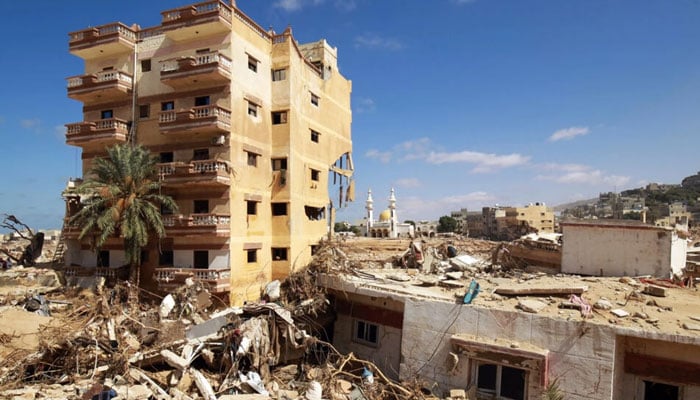Emergency teams in Derna, Libya, continue their search for the thousands of people still missing following a tsunami-sized flash flood that struck the city, leaving at least 4,000 people dead.
The catastrophic event was triggered when two upstream dams burst, transforming Derna into an apocalyptic wasteland where entire city blocks were swept into the Mediterranean.
Eye-witness accounts recount the terrifying speed at which the water level rose, sweeping away cars, buildings, and people. Traumatised survivors speak of their ordeal, with one individual describing how they clung to life on the fourth floor as the water surged up to the second floor. The aftermath has left hundreds of body bags lining the streets, awaiting mass burials.
Yann Fridez, the head of the Libya delegation of the International Committee of the Red Cross, describes the disaster as “violent and brutal.” He highlights the destruction of buildings and infrastructure and the heart-wrenching experience of families searching for missing loved ones.
Derna’s residents are grappling with the enormity of their losses, with estimates suggesting that at least 10% of the city’s population has perished. Infrastructure issues compounded by political turmoil in Libya have played a significant role in the devastation. Climate experts link this disaster to a changing climate, with Storm Daniel gaining strength during an unusually hot summer.
UN World Meteorological Organisation chief Petteri Taalas emphasises that better coordination and functioning early warning systems could have significantly reduced casualties. However, access to Derna remains severely hampered, with roads and bridges destroyed, power and phone lines cut, and over 30,000 people now homeless.
As the international community mourns the loss of life and the scale of destruction in Derna, this disaster serves as a grave reminder of the catastrophic impact of climate change on vulnerable regions worldwide.




